11 Outrageous Flowers That Start With O + Growing Guides

This post follows our research editorial guidelines.

Organizing the optimal garden is not just about getting ornamental flowers that ooze opulence. Rather, it is about observing the particular characteristics and needs of flowers and optimizing your garden to facilitate growth.
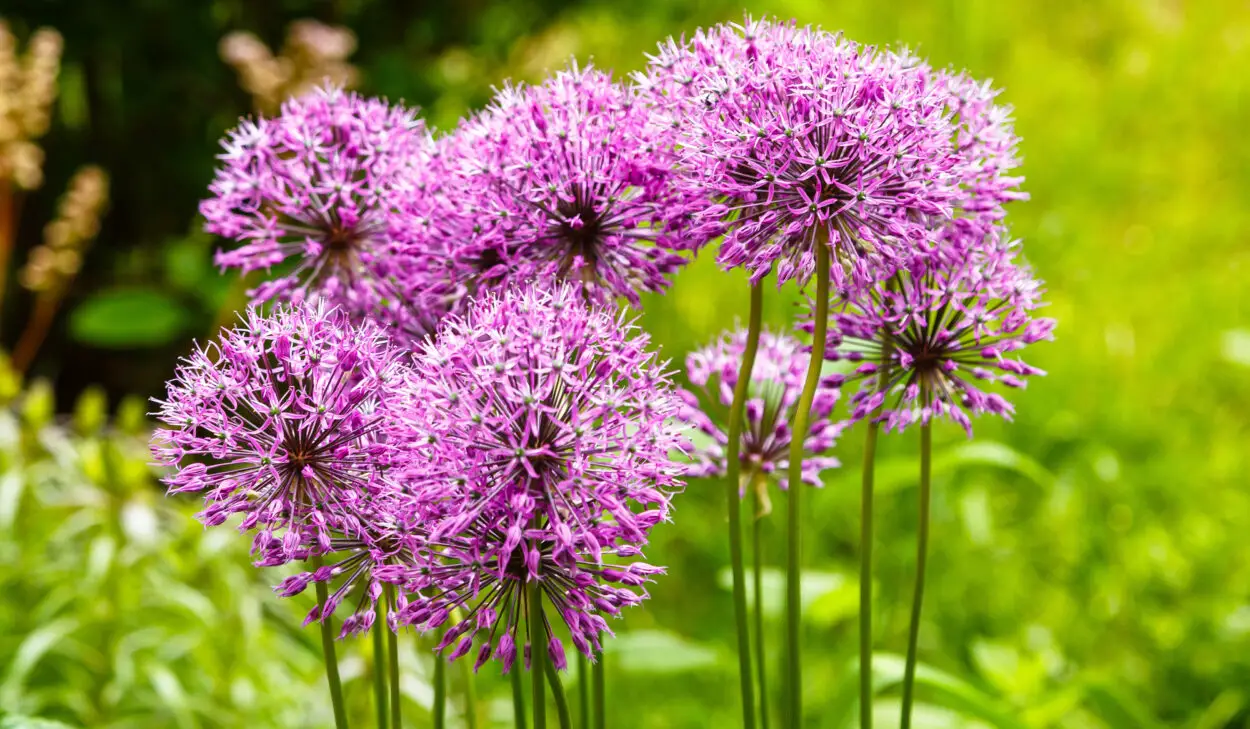
Open up to your endless options when looking for flowers, starting with O. In this article, I cover the A to Z about planting these flowers and give you opportunities to enhance your gardening journey.
Quickly Find Flowers That Start With O
1. Obedient Plant (Physostegia virginiana)

The obedient plant gets its name from its flexible stems. The soft stems can be bent into different positions and will retain that form permanently. This unique behavior has earned the plant its name, ‘obedient plant,’ as if it were obeying the gardeners’ directions.
This tall pink perennial forms long tubular stems, often reaching 2 to 4 feet in length. They have long cones that are packed densely with buds that will bloom to reveal small trumpet-shaped flowers. These can be purple, pink, or white in color.
| Botanical Name: | Physostegia virginiana |
| Growth Rate: | Moderate to fast |
| Native Range: | North America |
| Hardiness Zones: | 3-9 |
| Soil Needs: | Moist to wet soil |
| Exposure: | Full sun to partial shade |
| Blooming Period: | Summer to early fall |
| Water needs: | Moderate to high |
2. Oregano (Origanum vulgare)
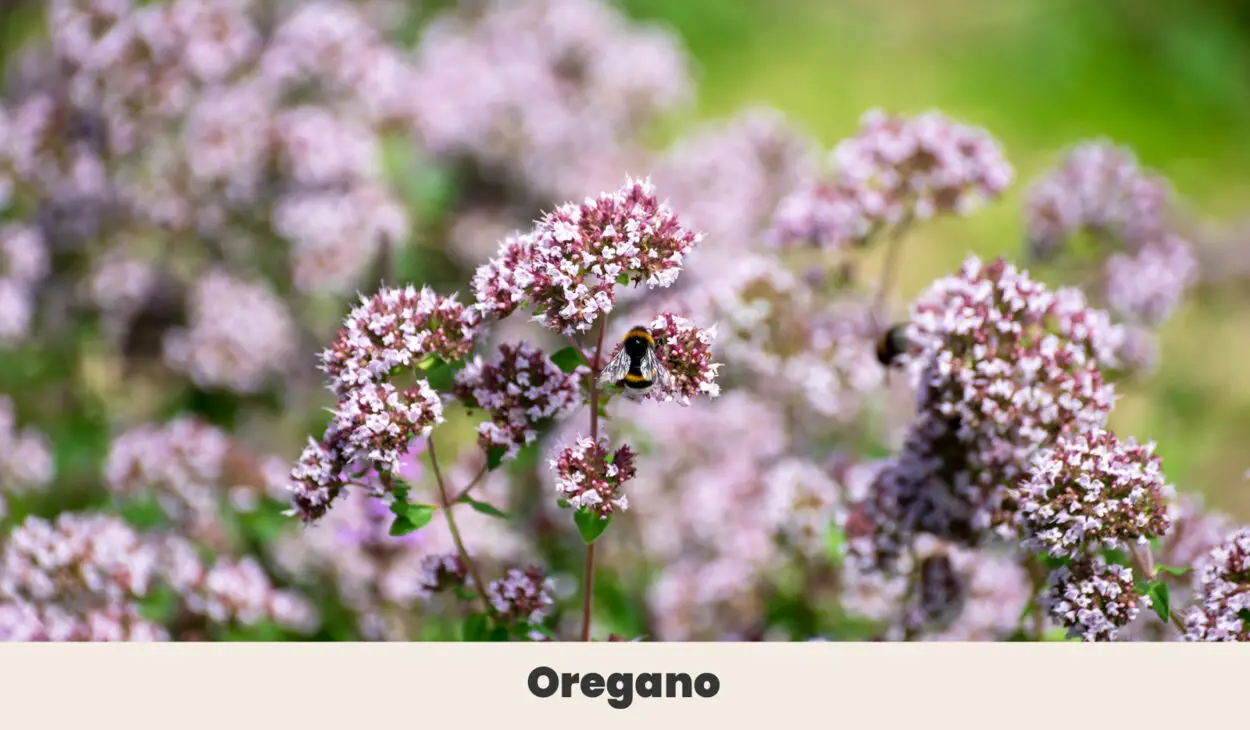
Origanum vulgare is the common oregano herb used in cooking. While most people only know this as an herb, it actually makes for a fantastic garden plant.
Not to mention, you also get a supply of extremely fragrant fresh oregano that adds some cheer and joy to your kitchen creations as well. Oregano is a sun-loving ground cover that will creep across your garden given enough time.
This is one of the oldest herbs used for culinary and medicinal purposes in the Mediterranean region for several centuries. Oregano is associated with joy, well-being, and positive energy — and is even used as a symbol of good luck.
| Botanical Name: | Origanum vulgare |
| Growth Rate: | Moderate |
| Native Range: | Mediterranean region |
| Hardiness Zones: | 4-9 |
| Soil Needs: | Well-drained soil, loam, sand |
| Exposure: | Full sun |
| Blooming Period: | Summer |
| Water needs: | Moderate watering |
3. Oregon Grape (Mahonia)
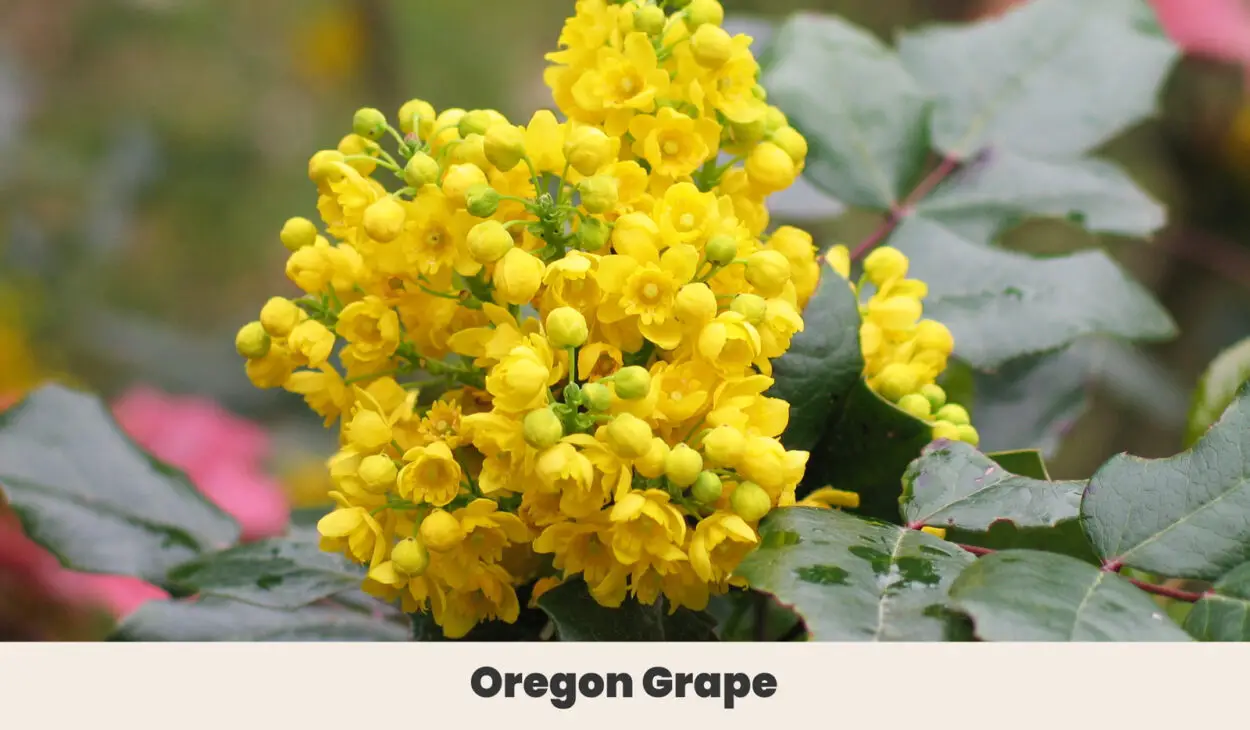
Mahonia is a beautiful little shrub with several benefits besides its unique look. This particular berry bush holds a special place in the hearts of Native Americans.
Oregon grape has been used by Native Americans for centuries in various ways. It produces small grape-like berries, which are used to create dyes, and its roots are used for medicinal purposes.
It features spiky, leathery leaves, and after the berries are gone, it will develop small yellow flowers that look amazing in contrast to the thick green leaves.
The berries are also a favorite with wildlife, so be ready to accept some visitors.
| Botanical Name: | Mahonia |
| Growth Rate: | Slow to moderate |
| Native Range: | North America |
| Hardiness Zones: | 5-9 |
| Soil Needs: | Loam, sand, clay |
| Exposure: | Full sun to shade |
| Blooming Period: | Spring |
| Water needs: | Moderate |
4. Oyster Plant (Tradescantia Spathacea)
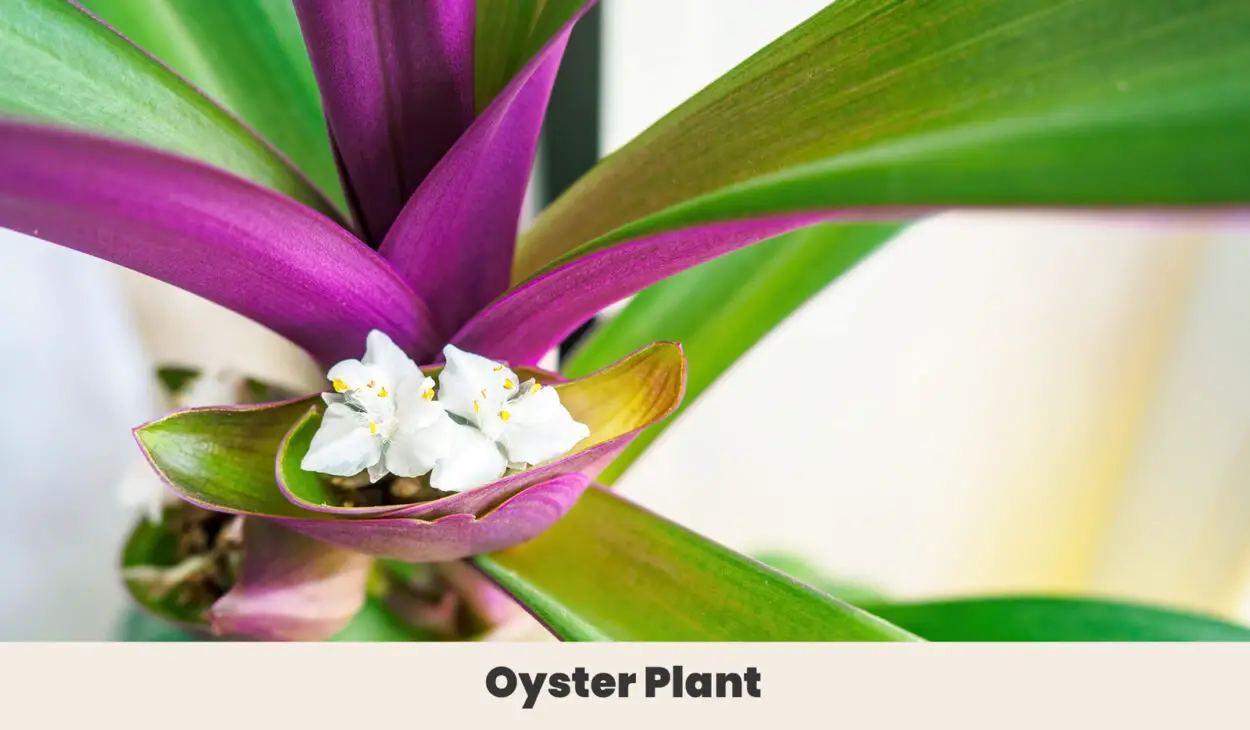
The oyster plant is a great starter plant for new gardening enthusiasts. It is colorful, perennial with white flowers, extremely easy to maintain, and quite sturdy.
This plant features long, lance-shaped leaves that are dark green on the upper side and purple/magenta underneath. The leaves tend to curl upwards, creating a boat-like shape. This exposes the colorful underside and creates an interesting texture.
The oyster plant occasionally develops small white flowers that are nestled in the long leaves, which look like an oyster nestled in its shell.
| Botanical Name: | Tradescantia spathacea |
| Growth Rate: | Moderate |
| Native Range: | Mexico and Central America |
| Hardiness Zones: | 9-11 |
| Soil Needs: | Well drained soil, sand |
| Exposure: | Indirect light to partial shade |
| Blooming Period: | Can occasionally develop flowers |
| Water needs: | Moderate |
5. Oriental Poppy (Papaver orientale)
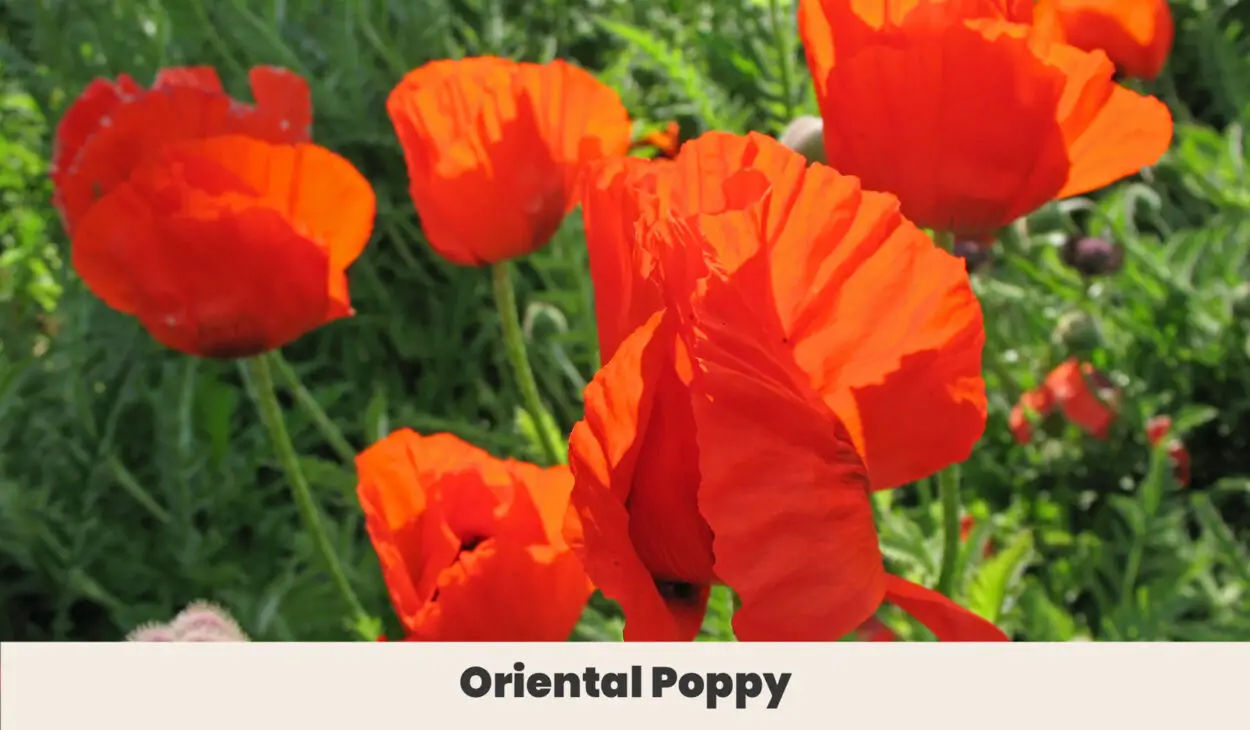
The Oriental Poppy is a much larger version of the common poppy/California poppy flower.
These orange perennial flowers can typically reach 6 inches in diameter. They have an interesting dark orange, nearly plastic-orange type of color and a dark brown and almost black center.
There are many different kinds of poppy flowers, and they hold importance in many cultures and societies around the world. They are considered a sign of beauty and luxury and in the sphere of gardening, they are a prized asset to have in your garden.
| Botanical Name: | Papaver Orientale |
| Growth Rate: | Moderate |
| Native Range: | Eastern Mediterranean region |
| Hardiness Zones: | 3-8 |
| Soil Needs: | Well drained soil |
| Exposure: | Full sun |
| Blooming Period: | Late spring to early summer |
| Water needs: | Moderate |
6. Ornamental Onion (Allium sp.)

The ornamental onion is a purple flowering perennial that has many different species. The Allium cultivar is especially popular due to its structure and color.
This plant has been used as a gardening plant for many centuries. It features long, sturdy stems at the end of which you will find a fuzzy flower head. This spherical flower head consists of hundreds of tiny purple flowers.
It can look like a pompom or woolen ball attached to the plant from a distance. These don’t have any special history to them other than the fact that they have been popular for hundreds of years due to their unique shape and colors.
If you want to add a striking visual contrast to your garden, the ornamental onion will certainly do it.
| Botanical Name: | Allium Sp. |
| Growth Rate: | Moderate |
| Native Range: | Different species come from different places |
| Hardiness Zones: | 4-8 |
| Soil Needs: | Loam, sand |
| Exposure: | Full sun |
| Blooming Period: | Late spring |
| Water needs: | Moderate |
7. Oxeye Daisy (Leucanthemum Vulgare)
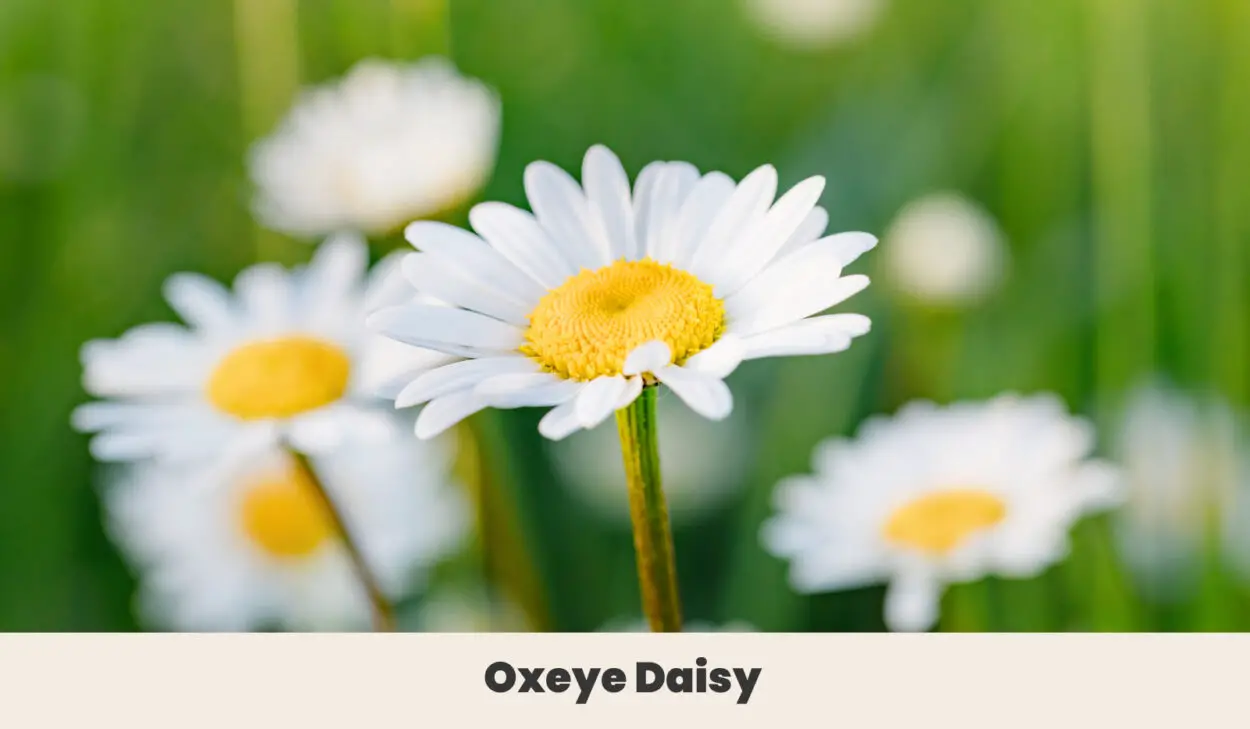
The Oxeye Daisy is the classic daisy you’ll see in media and representations of daisy-filled fields nestled between lush green hills. This is a very common and popular plant in Europe and has played an important role in European culture.
The daisy is seen as a sign of innocence, purity, and youth. It is an attractive flower that features white petals on the border and a warm yellow center cone. The petals are arranged in a radial layout, creating the unique look of the plant.
The thin, delicate, lance-like leaves are very visually appealing. These flowers sit at the end of stems that can be up to 4 feet long, making them perfect for large and small spaces alike.
| Botanical Name: | Leucanthemum vulgare |
| Growth Rate: | Fast |
| Native Range: | Europe, Asia, North Africa |
| Hardiness Zones: | 3-8 |
| Soil Needs: | Well drained soil |
| Exposure: | Full sun to partial shade |
| Blooming Period: | Summer |
| Water needs: | Moderate |
8. Orchid (Orchidaceae)
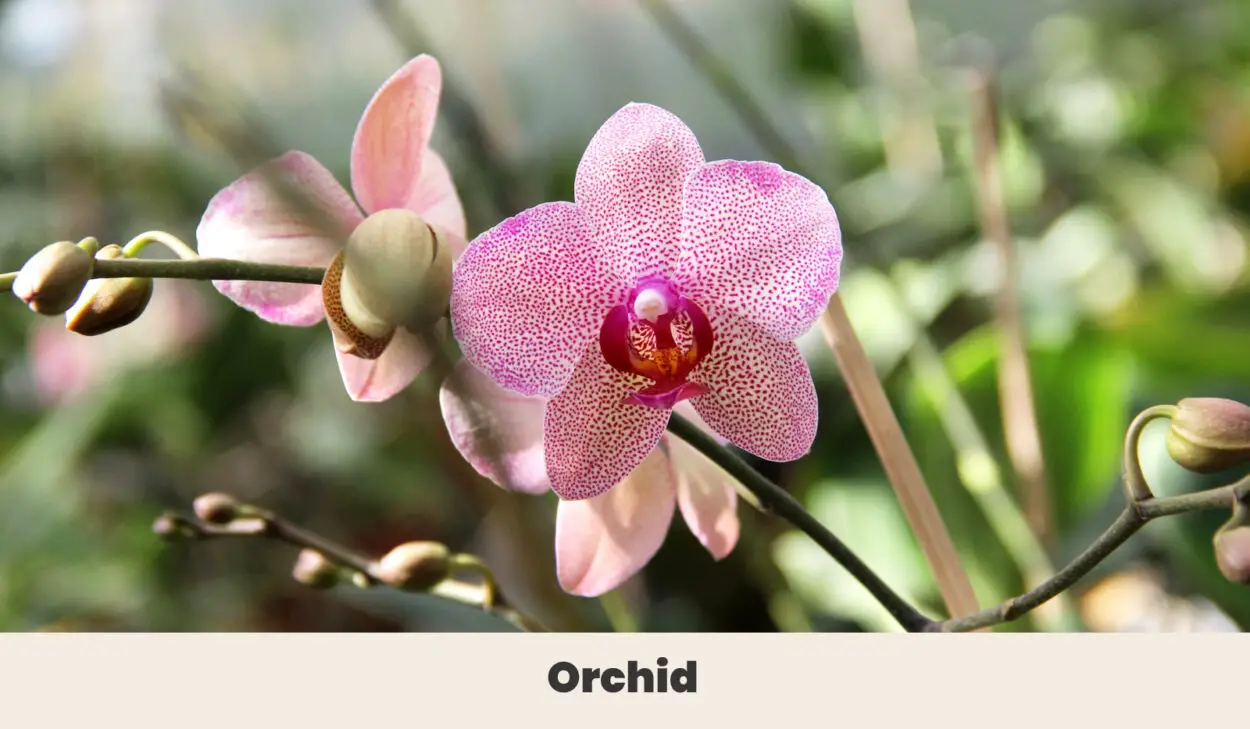
The Orchidaceae is a diverse family of plants well known for their beautiful and often highly fragrant flowers.
You can get flowers of all different shapes, sizes, and colors within this group of plants. The most common shape is a five-petal orchid. However, there are many other types as well.
These are commonly found in many colors, such as white, pink, purple, yellow, blue, and more.
There is plenty of variety when it comes to plant size. Some varieties can be used as table flowers, while others are vines that can easily spread up and across an entire wall or building.
Orchids have been used for centuries as decorative plants in cultures around the world.
| Botanical Name: | Orchidaceae |
| Growth Rate: | Can vary depending on the species |
| Native Range: | Various species are found all over the world |
| Hardiness Zones: | Varies depending on the species |
| Soil Needs: | Orchid-specific potting mixture |
| Exposure: | Varies from filtered light to bright indirect light |
| Blooming Period: | Some bloom once a year while others bloom multiple times |
| Water needs: | Light watering but watering needs to be done carefully |
9. Orange Blossom (Citrus Sinensis)

The orange blossom is a great flower, but you might be waiting a while for this white flowering tree to produce flowers and consequently fruit.
This flower is significant in many cultures, commonly used for marriage ceremonies as it symbolizes love, fertility, and purity.
The flower itself is also extremely fragrant, with a sweet and gentle citrus scent. The blossoms are small and white in color, with five petals that are clustered over each other.
In the center is a white cone with a touch of yellow, similar in shape and design to the jasmine flower.
| Botanical Name: | Citrus sinensis |
| Growth Rate: | Moderate |
| Native Range: | Southeast Asia |
| Hardiness Zones: | 9-11 |
| Soil Needs: | Well-drained soil |
| Exposure: | Full sun |
| Fertilizer: | Citrus fertilizer |
| Blooming Period: | Spring |
| Water needs: | Regular water needed |
10. Orange Zinnia (Zinnia spp.)

The orange zinnia is one of the most spectacular orange flowering perennials. It is a favorite with gardeners for its bright color and showy petal structure. It has a large daisy-like structure with a single layer of petals originating from the center.
The Orange zinnia is mostly found in a bright orange color, but some varieties showcase light peach, pink, and deeper shades of orange. The flower is associated with warmth, joy, energy, enthusiasm, and positivity.
These are excellent for planting in containers, along garden borders, or as cut flowers.
| Botanical Name: | Zinnia spp |
| Growth Rate: | Fast |
| Native Range: | Mexico and southwestern United States |
| Hardiness Zones: | 2-11 |
| Soil Needs: | Well-drained soil |
| Exposure: | Full sun |
| Blooming Period: | Summer to fall |
| Water needs: | Regular watering |
11. Orange Cosmos (Cosmos Sulphureus)
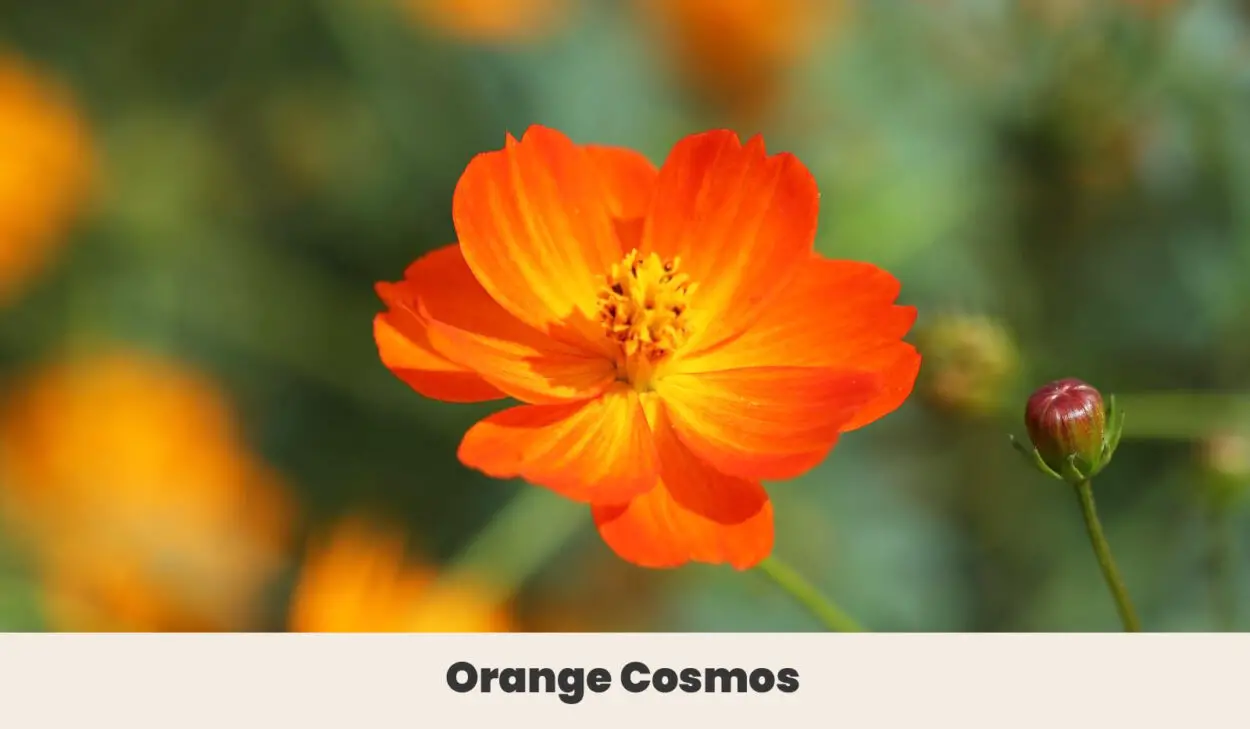
The color orange is often associated with positivity and warmth, and the orange cosmos flowers are also considered a great way to bring a bit more joy, warmth, and positivity to a garden.
The orange cosmos are large and daisy-like flowers, with petals surrounding the cone center. The petals are typically a strong orange color, but they can be much darker shades of orange or even light golden.
The petals on this plant are similar to ferns and this gives them an airy look. These can also be quite tall, reaching 4 to 5 feet in height, so it sits at eye level and certainly grabs a lot of attention.
| Botanical Name: | Cosmos sulphureus |
| Growth Rate: | Fast |
| Native Range: | Mexico, Central America |
| Hardiness Zones: | 9-11 |
| Soil Needs: | Well-drained soil |
| Exposure: | Full sun |
| Blooming Period: | Summer to fall |
| Water needs: | Moderate |
Final Thoughts
There you have it – 11 plants starting with the letter O!
You can find plants starting with the letter O that are small enough for a pot on your window sill or as large as a full tree in your garden!
Choosing the best flower for your needs is about understanding what will work in your environment and what will suit your existing garden setup.

